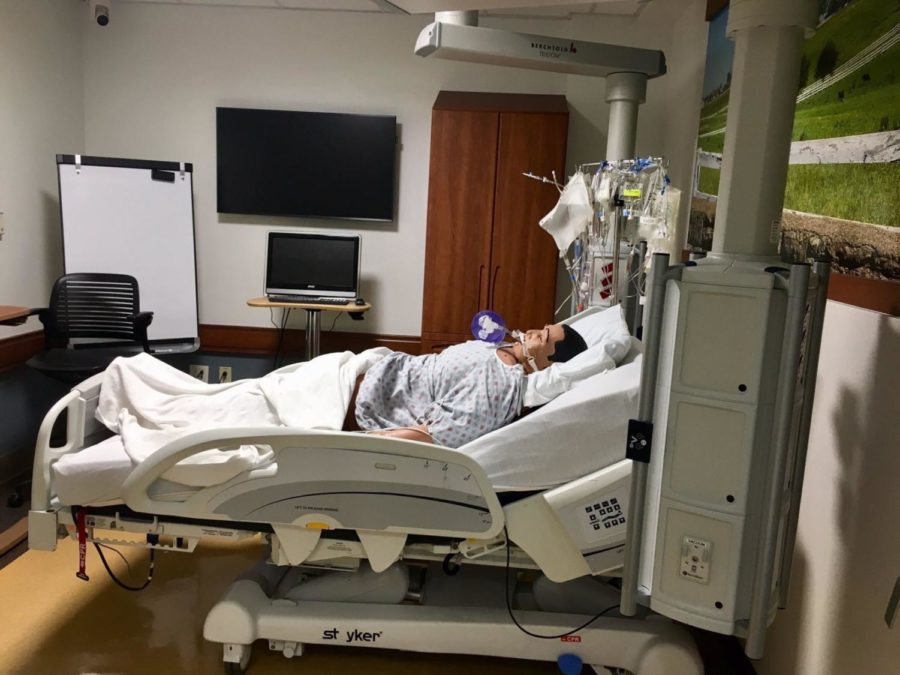‘It will talk to you’: UK patient simulators give realistic training
The UK HealthCare Simulation Center provides a realistic training environment for future health care providers and advanced technology for current researchers, UK HealthCare officials said. Photo provided by Ramakanth Kavuluru.
November 29, 2018
UK HealthCare has taken a big leap into the world of training and research with a new patient simulation center that just opened at the Albert B. Chandler Hospital.
Consisting of three patient rooms on the second floor of the hospital, the UK HealthCare Simulation Center provides a realistic training environment for future health care providers and advanced technology for current researchers, UK HealthCare officials said. In each patient room there is a simulator, which could very easily be mistaken for an actual human as they look and act like real people.
The center features an Intensive Care Unit, an Operating Room and a Flex Room. Students and researchers use these rooms and simulators in order to produce the most accurate and real-life situations that they’re likely to encounter in the real world. There are five simulators and each one is meant to help train different things. HPS, the Operating Room simulator, is worth $250,000 and for a good reason.
“It can duplicate almost all human physiology that you could think of. It cries, it seizes, it will vomit, it will talk to you,” said Dr. Zaki Hassan, a professor of anesthesiology and surgery. “If you give (the simulator) a drug, it will recognize what drug it is and the concentration. It will recognize the drug, the concentration and the volume given and will respond appropriately.”
The four other simulators that the center features are referred to as iStan, the Intensive Care Unit simulator, and the three simulators meant for the patient rooms: PediaSim, Apollo and Lucina.
The simulation that takes place in each room can be controlled from the operating room by a third party.
“The purpose of that is to run them through a complicated scenario,” said Hissan, referring to students or trainees.
Each room is equipped with cameras and microphones so that they are able to watch themselves back and learn from their mistakes.
Each room mirrors exactly what these future health care providers will see by including the same detail, of each real hospital room, in each simulation room.
“It’s the same furnishings, same kind of murals, same kind of authentic equipment,” said Jenny Sutton-Amr, the administrative director of the simulation center.
With every detail from the actual simulations to the murals on the wall, Hissan describes the center to be “one of the best in the country.”
































































































































































